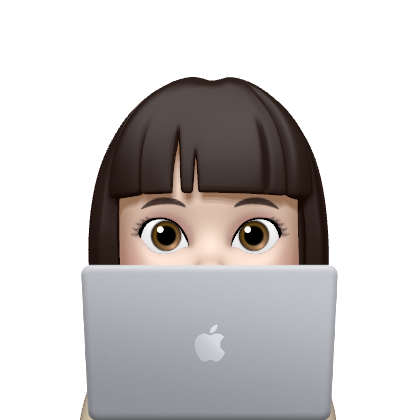안드로이드 개발자의 창고
[27일차 Android] Layout(LinearLayout, RelativeLayout, ConstraintLayout) 본문
Computer/Android
[27일차 Android] Layout(LinearLayout, RelativeLayout, ConstraintLayout)
Wise-99 2023. 6. 9. 18:30
출처 : 안드로이드 앱스쿨 2기 윤재성 강사님 수업 PPT
📖 Layout
- 안드로이드는 좌표가 아닌 배치되는 모양을 결정하게 된다.
- 개발자가 배치되는 모양을 결정하고 뷰들을 배치하면 안드로이드 OS가 단말기에 적합한 좌표를 계산하고 뷰들을 배치하게 된다.
Parent와 Child
- 안드로이드는 화면을 구성하기 위해 layout을 먼저 배치하고 그 위에 다른 View들을 배치하게 된다.
- 이 때 layout을 Parent라고 부르고 배치되는 View들을 Child라고 부른다.
- 모든 View들은 단 하나의 Parent를 가질 수 있으며 모든 layout은 다수의 Child를 가질 수 있다.
Layout 공통 속성
- layout_width : 뷰의 가로길이. dp 단위 값, wrap_content, match_parent
- layout_height : 뷰의 세로길이, dp 단위 값, wrap_content, match_parent
- wrap_conent : 자기를 완변하게 표현할 수 있는 최소 사이즈
- match_parent : 레이아웃 크기에 꽉 채운다.
📖 LinearLayout
- 방향성을 가지고 view를 배치하는 layout이다.
- 가로 혹은 세로 방향으로 배치할 수 있으며 한 칸에 하나의 view만 배치할 수 있다.
- 안드로이드에서 가장 많이 사용하는 layout으로 여러 LinearLayout을 조합하여 다양한 모양을 만들 수 있다.
주요 속성
- orientation : 뷰가 배치되는 모양
- horizontal(좌측에서 우측으로, 생략), vertical(위에서 아래로)
- layout_weight : 뷰가 차지할 크기 비율
- LinearLayout의 orientation 속성이 horizontal이라면 가로 크기 조정
- veritcal이면 세로 길이 조정
예제 코드
<?xml version="1.0" encoding="utf-8"?>
<LinearLayout xmlns:android="http://schemas.android.com/apk/res/android"
xmlns:app="http://schemas.android.com/apk/res-auto"
xmlns:tools="http://schemas.android.com/tools"
android:layout_width="match_parent"
android:layout_height="match_parent"
android:orientation="vertical"
tools:context=".MainActivity">
<LinearLayout
android:layout_width="match_parent"
android:layout_height="match_parent"
android:layout_weight="1"
android:orientation="horizontal">
<Button
android:id="@+id/button16"
android:layout_width="match_parent"
android:layout_height="match_parent"
android:layout_weight="1"
android:text="Button" />
<Button
android:id="@+id/button17"
android:layout_width="match_parent"
android:layout_height="match_parent"
android:layout_weight="1"
android:text="Button" />
<Button
android:id="@+id/button18"
android:layout_width="match_parent"
android:layout_height="match_parent"
android:layout_weight="1"
android:text="Button" />
<Button
android:id="@+id/button19"
android:layout_width="match_parent"
android:layout_height="match_parent"
android:layout_weight="1"
android:text="Button" />
</LinearLayout>
<LinearLayout
android:layout_width="match_parent"
android:layout_height="match_parent"
android:layout_weight="1"
android:orientation="vertical">
<Button
android:id="@+id/button7"
android:layout_width="match_parent"
android:layout_height="wrap_content"
android:layout_weight="1"
android:text="Button" />
<Button
android:id="@+id/button8"
android:layout_width="match_parent"
android:layout_height="wrap_content"
android:layout_weight="1"
android:text="Button" />
<Button
android:id="@+id/button9"
android:layout_width="match_parent"
android:layout_height="wrap_content"
android:layout_weight="1"
android:text="Button" />
<Button
android:id="@+id/button10"
android:layout_width="match_parent"
android:layout_height="wrap_content"
android:layout_weight="1"
android:text="Button" />
</LinearLayout>
</LinearLayout>코드 리뷰
- 최상단의 Layout을 LinearLayout(vertical)로 배치한다.
- 두 개의 LinearLayout를 배치하고 버튼을 4개씩 배치한다.
- 두 개의 LinearLayout의 속성을 layout_height = "match_parent", layout_weight="1"로 설정하여 화면을 1:1의 비율로 차지하도록 설정한다.
- 상단의 LinearLayout 안에 배치한 Button의 속성을 android:layout_width="match_parent", android:layout_weight="1"로 설정하여 LinearLayout을 1:1:1:1의 비율로 차지하도록 설정한다.
- 하단의 LinearLayout 안에 배치한 Button의 속성을 android:layout_height="match_parent", android:layout_weight="1"로 설정하여 LinearLayout을 1:1:1:1의 비율로 차지하도록 설정한다.
결과

📖 RelativeLayout
- Parent나 다른 view와의 관계를 설정하여 배치하는 layout이다.
- Relative Layout 에는 특별한 속성이 없지만 배치되는 view 들의 속성을 이용해 배치를 결정하게 된다.
주요 속성
| 주요 속성 | 설명 |
| layout_alignParentTop | 자신의 상단을 parent의 상단 부분과 일치시킨다. |
| layout_alignParentBottom | 자신의 하단을 parent의 하단 부분과 일치시킨다. |
| layout_alignParentLeft | 자신이 좌측 부분을 parent의 좌측 부분과 일치시킨다. |
| layout_alignParentRight | 자신의 우측 부분을 parent의 우측 부분과 일치시킨다. |
| layout_alignWithParentMissing | 다른 view를 정렬 기준으로 설정하였을 경우 기준으로, 설정한 view가 없을 때는 parent를 기준으로 정렬한다. |
| 주요 속성 | 설명 |
| layout_centerHorizontal | 세로 방향의 중앙에 정렬한다. |
| layout_centerVertical | 가로 방향의 중앙에 정렬한다. |
| layout_centerInParent | 가로 세로 모두 중앙에 정렬한다. |
| 주요 속성 | 설명 |
| layout_alignTop |
자신의 상단 부분을 지정된 view의 상단 부분에 일치시킨다.
|
| layout_alignBottom |
자신의 하단 부분을 지정된 view 의 하단 부분에 일치시킨다.
|
| layout_alignLeft |
자신의 좌측 부분을 지정된 view 의 좌측에 일치시킨다.
|
| layout_alignRight |
자신의 우측 부분을 지정된 view 의 우측에 일치시킨다.
|
| layout_alignBaseline |
자신의 Baseline 부분과 지정된 view의 Baseline을 일치시킨다.
|
| 주요 속성 | 설명 |
| layout_above |
지정된 view 상단에 배치한다.
|
| layout_below |
지정된 view 하단에 배치한다.
|
| layout_toRightOf |
지정된 view 우측에 배치한다.
|
| layout_toLeftOf | 지정된 view 좌측에 배치한다. |
예제 코드
<?xml version="1.0" encoding="utf-8"?>
<RelativeLayout xmlns:android="http://schemas.android.com/apk/res/android"
xmlns:app="http://schemas.android.com/apk/res-auto"
xmlns:tools="http://schemas.android.com/tools"
android:layout_width="match_parent"
android:layout_height="match_parent"
android:padding="10dp"
tools:context=".MainActivity">
<TextView
android:id="@+id/textView"
android:layout_width="wrap_content"
android:layout_height="wrap_content"
android:layout_alignParentLeft="true"
android:layout_alignParentTop="true"
android:text="아이디"
android:textAppearance="@style/TextAppearance.AppCompat.Large" />
<EditText
android:id="@+id/editTextTextEmailAddress"
android:layout_width="wrap_content"
android:layout_height="wrap_content"
android:layout_below="@id/textView"
android:layout_alignParentLeft="true"
android:layout_alignParentRight="true"
android:ems="10"
android:inputType="textEmailAddress" />
<TextView
android:id="@+id/textView2"
android:layout_width="wrap_content"
android:layout_height="wrap_content"
android:layout_below="@id/editTextTextEmailAddress"
android:layout_alignParentLeft="true"
android:text="비밀번호"
android:textAppearance="@style/TextAppearance.AppCompat.Large" />
<EditText
android:id="@+id/editTextTextPassword"
android:layout_width="wrap_content"
android:layout_height="wrap_content"
android:layout_below="@id/textView2"
android:layout_alignParentLeft="true"
android:layout_alignParentRight="true"
android:ems="10"
android:inputType="textPassword" />
<Button
android:id="@+id/button3"
android:layout_width="wrap_content"
android:layout_height="wrap_content"
android:layout_below="@id/editTextTextPassword"
android:layout_toLeftOf="@id/button4"
android:text="로그인" />
<Button
android:id="@+id/button4"
android:layout_width="wrap_content"
android:layout_height="wrap_content"
android:layout_below="@id/editTextTextPassword"
android:layout_alignRight="@id/editTextTextPassword"
android:layout_alignParentRight="true"
android:text="취소" />
</RelativeLayout>코드 리뷰
- textView
- android:layout_alignParentLeft="true" : 자신의 왼쪽과 부모(RelativeLayout)의 왼쪽을 일치시킨다.
- android:layout_alignParentTop="true" : 자신의 상단과 부모(RelativeLayout)의 상단을 일치시킨다.
- editTextTextEmailAddress
- android:layout_below="@id/textView" : textView의 하단에 배치한다.
- button3
- android:layout_below="@id/editTextTextPassword" : editTextTextPassword의 하단에 배치한다.
- android:layout_toLeftOf="@id/button4" : button4의 좌측에 배치한다.
- button4
- android:layout_alignRight="@id/editTextTextPassword" : editTextTextPassword의 우측과 자신의 우측을 일치시킨다.
- android:layout_alignParentRight="true" : 자신의 우측과 부모의 우측을 일치시킨다.
결과

📖 ConstraintLayout
- RelativeLayout을 개선한 layout으로 RelativeLayout보다 유연하게 화면을 구성할 수 있는 특징이 있다.
제약 조건
- ConstraintLayout은 RelativeLayout처럼 부모와의 관계나 다른 View와의 관계를 설정하게 된다.
- 제약 조건은 다음과 같이 두 가지를 사용할 수 있다.
-
실선 제약 조건 : 지정된 기준으로부터 얼마큼 떨어진 위치에 있는지 좌표를 설정한다.
-
스프링 제약 조건 : 지정된 기준으로부터 얼마큼 떨어진 위치에 있는지 비율을 설정한다.
-
예제 코드
<?xml version="1.0" encoding="utf-8"?>
<androidx.constraintlayout.widget.ConstraintLayout
xmlns:android="http://schemas.android.com/apk/res/android"
xmlns:app="http://schemas.android.com/apk/res-auto"
xmlns:tools="http://schemas.android.com/tools"
android:layout_width="match_parent"
android:layout_height="match_parent"
tools:context=".MainActivity">
<TextView
android:id="@+id/textView"
android:layout_width="wrap_content"
android:layout_height="wrap_content"
android:text="아이디"
android:textAppearance="@style/TextAppearance.AppCompat.Large"
app:layout_constraintStart_toStartOf="parent"
app:layout_constraintTop_toTopOf="parent" />
<EditText
android:id="@+id/editTextText"
android:layout_width="0dp"
android:layout_height="wrap_content"
android:ems="10"
android:inputType="text"
android:text="Name"
app:layout_constraintEnd_toEndOf="parent"
app:layout_constraintStart_toStartOf="parent"
app:layout_constraintTop_toBottomOf="@+id/textView" />
<TextView
android:id="@+id/textView2"
android:layout_width="wrap_content"
android:layout_height="wrap_content"
android:text="비밀번호"
android:textAppearance="@style/TextAppearance.AppCompat.Large"
app:layout_constraintStart_toStartOf="parent"
app:layout_constraintTop_toBottomOf="@+id/editTextText" />
<EditText
android:id="@+id/editTextTextPassword"
android:layout_width="0dp"
android:layout_height="wrap_content"
android:ems="10"
android:inputType="textPassword"
app:layout_constraintEnd_toEndOf="parent"
app:layout_constraintHorizontal_bias="0.179"
app:layout_constraintStart_toStartOf="parent"
app:layout_constraintTop_toBottomOf="@+id/textView2" />
<Button
android:id="@+id/button"
android:layout_width="wrap_content"
android:layout_height="wrap_content"
android:text="로그인"
app:layout_constraintEnd_toStartOf="@+id/button2"
app:layout_constraintTop_toBottomOf="@+id/editTextTextPassword" />
<Button
android:id="@+id/button2"
android:layout_width="wrap_content"
android:layout_height="wrap_content"
android:text="취소"
app:layout_constraintEnd_toEndOf="parent"
app:layout_constraintTop_toBottomOf="@+id/editTextTextPassword" />
</androidx.constraintlayout.widget.ConstraintLayout>코드 리뷰
- app:layout_constraint ~~ _to ~ Of="parent" : 부모의 ~ 방향과 자신의 ~~ 방향에 대한 비율을 설정한다.
결과

'Computer > Android' 카테고리의 다른 글
| [28일차 Android] Space (0) | 2023.06.10 |
|---|---|
| [28일차 Android] Include Other Layout (0) | 2023.06.10 |
| [27일차 Android] View Binding (0) | 2023.06.07 |
| [27일차 Android] View의 기본 개념 (0) | 2023.06.07 |
| [27일차 Android] 동작 원리 (0) | 2023.06.07 |



